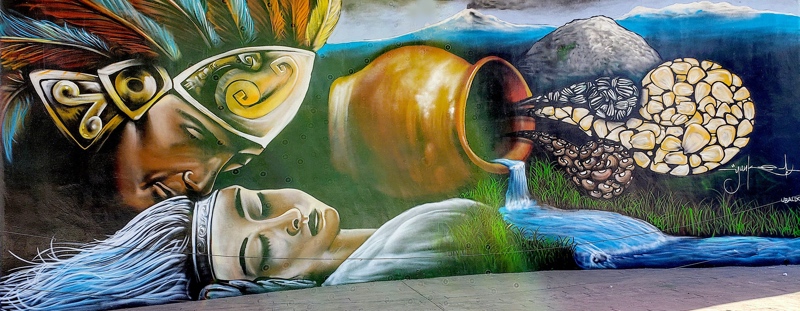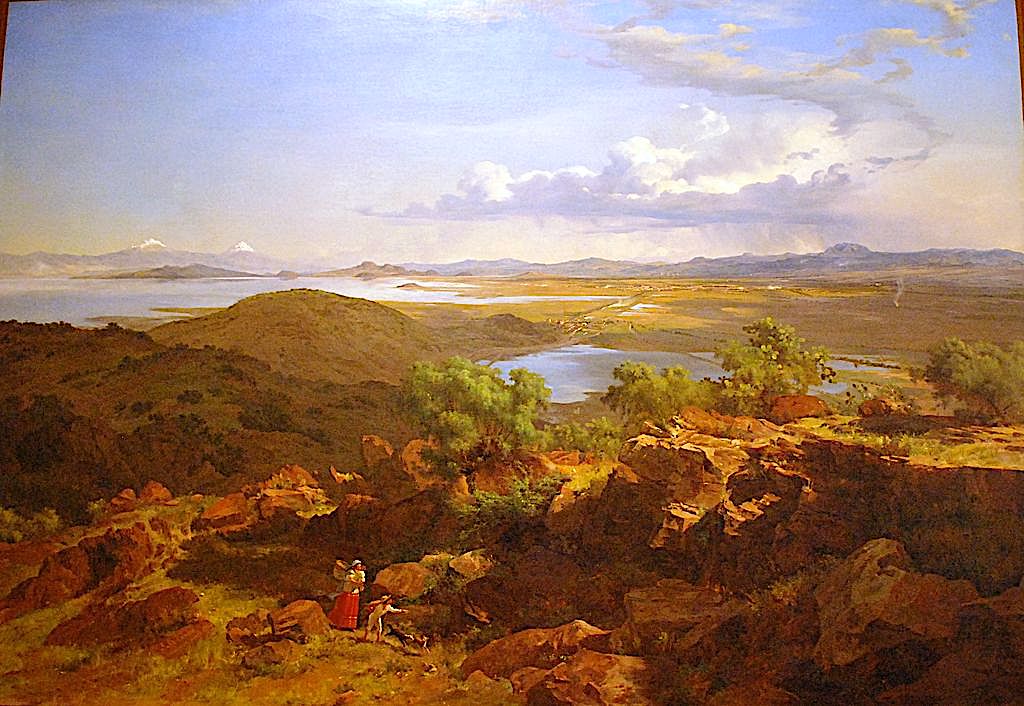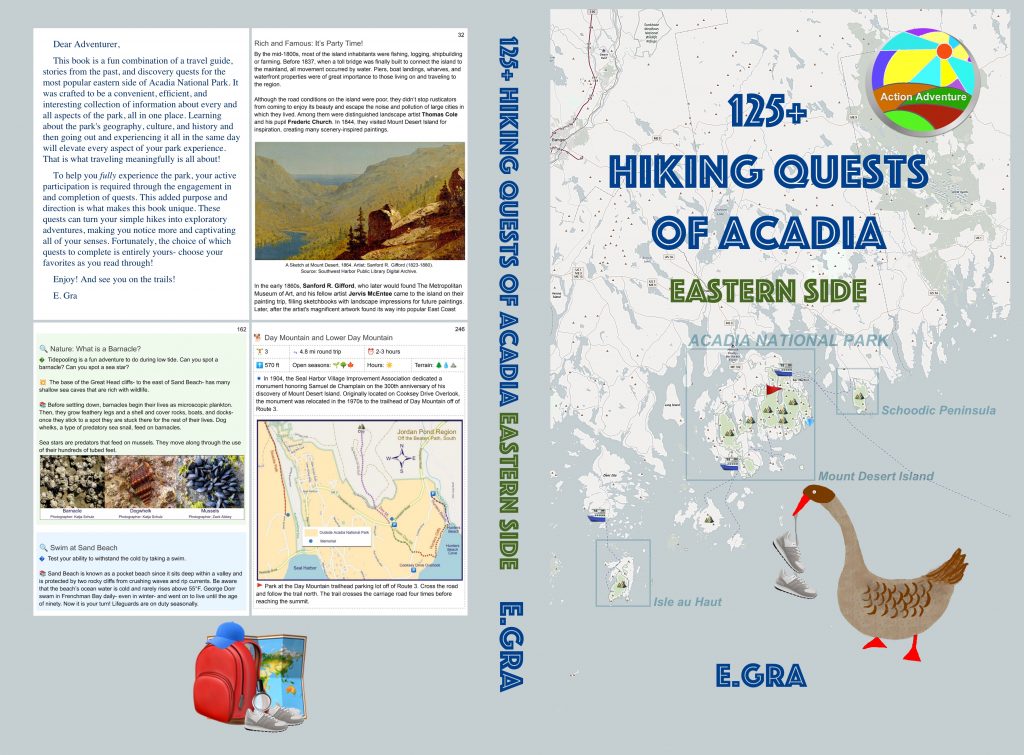Let’s play! Today, we will explore the geography around Mexico City through paintings.
Quest #1: Visit the Museo Nacional de Arte (Free on Sundays) in Mexico City in search of any of the paintings below.
Well, Mexico City is located in the Valley of Mexico. To imagine the valley before its degradation with today’s urban development, enjoy three paintings by the famous Mexican artist José María Velasco, depicting the valley from more than 150 years ago.

Completely surrounded by mountains, the valley used to collect its waters in five now-extinct lakes dotted with countless islands.
The white peaks that predominate paintings vistas are the Iztaccíhuatl (White Woman) and Popocatépetl (Smoking Mountain) volcanos.
In Aztec mythology, Iztaccíhuatl was a princess who fell in love with one of her father’s warriors, Popocatépetl. Noticing his daughter’s affection, emperor sends the warrior on a suicidal mission with his daughter hand in marriage as a reward. After receiving grave news about Popocatépetl death, Iztaccíhuatl dies of grief. When Popocatépetl returns and finds his lover dead, he takes her body for burial as far away from the city as possible.

After saying his goodbyes, he kneels by her grave. During the night, gods covered both bodies with snow, turning them into mountains. Iztaccíhuatl is the dormant volcano and its four snow-capped peaks depict the head, chest, knees and feet of a sleeping female. Popocatépetl is the most active volcano in Mexico, raining fire in rage at the loss of his beloved. Since the arrival on the Spanish in 1519, it have had more than 15 major eruptions.
Iztaccíhuatl is the third, while Popocatépetl is the second, highest peak in Mexico. They are called twins as they are connected. The dangerous pass between them is how Hernan Cortes and his men sneaked into the Valley of Mexico in 1519, while trying to avoid Aztec warriors.

via Wikipedia
Quest #2: Where is the artist's house? While the Museo Nacional de Arte in Mexico City, locate the paining above. Can you find the contours of Mexico City by two towers of its Cathedral? Now, follow the ancient Aztec causeway or raised road to the Basilica to the Virgin Guadalupe, one of the greatest spiritual places in Mexico. What geological formation the Basilica is on? The artist’s home at the foot of it.
| If you find my work worthwhile, drop me a few 🪙🪙🪙 It will allow me to keep writing content like this! |
Humans were always attracted to the valley due to its abundance of water, fish and game, mild climate and large territory suited for growing food. Inhabited for at least 12,000 years, the valley was a center of many early Mesoamerican cultures, including the ones we now know as
- the Builders of Teothihuacan (who lived 2000 years ago),
- the Toltec (who lived 1000 years ago), and
- the Aztec (who lived 500 years ago).

Quest #3: Look for more landscapes of the Valley of Mexico. Can you find any paintings of the Italian artist Eugenio Landesio? He was Velasco professor in the Royal Academy of San Carlos.
Quest #4: (Bonus) Visit the Antigua Academia de San Carlos. It is a beautiful building and good art museum.
Do you like my posts? What until you see my quests! If you ever decide to visit Acadia National Park, check out my book available on Amazon as paperback and Kindle editions. Buy a book, change a life! Thank you for your support and patronage.

Copyright © 2022 by E.Gra. Unless otherwise noted, all rights reserved. Unless otherwise indicated, no part of this work may be reproduced, or transmitted in any form or by any means without the author’s prior written consent.
